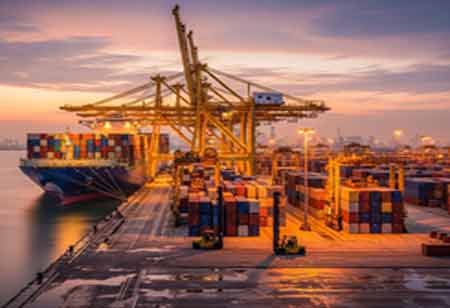THANK YOU FOR SUBSCRIBING
THANK YOU FOR SUBSCRIBING

By
Logistics Transportation Review | Wednesday, August 20, 2025
Stay ahead of the industry with exclusive feature stories on the top companies, expert insights and the latest news delivered straight to your inbox. Subscribe today.
Fremont, CA: Container shipping in Europe is undergoing a transformation driven by technological innovation, evolving trade dynamics, environmental regulation, and shifting customer expectations. As one of the world’s largest hubs for international trade, Europe plays a critical role in global supply chains, with major ports such as Rotterdam, Antwerp, and Hamburg handling millions of containers yearly.
Shifting economic conditions, geopolitical changes, and the push toward sustainability reshape how goods move through the region. Shipping lines and port operators are adopting new strategies and technologies to remain competitive, improve efficiency, and reduce their environmental footprint. The developments are influencing operations today and setting the direction for the future of maritime logistics across Europe.
Digitalisation and Sustainability Driving Transformation
Shipping companies and port authorities are investing in advanced analytics, smart sensors, and blockchain-based platforms to enhance visibility and streamline operations. Real-time tracking systems allow stakeholders to monitor container movements, predict arrival times, and optimise routes based on weather and congestion data. Digital documentation and automated customs processes reduce paperwork and speed up port clearance, improving the overall efficiency of supply chains. Many ports deploy AI and ML tools to manage container yard operations, allocate resources, and forecast demand.
The region has set aggressive emissions reduction targets, and the maritime sector must contribute to achieving them. Ports are investing in shore power infrastructure to allow vessels to turn off their docked engines, reducing emissions in port areas. Fleet renewal strategies prioritise energy-efficient vessel designs and hybrid propulsion systems. Carbon reporting and environmental performance tracking are becoming standard practices as shippers demand greener shipping options and governments introduce stricter regulations.
Regionalisation and Operational Optimisation
While global trade remains essential, European companies increasingly source goods closer to home to improve resilience and reduce transport times. The shift is encouraging the development of shorter intra-European shipping routes and increased use of feeder services that connect major hubs with smaller regional ports. Inland waterway transport and rail connections are being strengthened to create multimodal networks that extend the reach of container services deeper into European markets. The developments offer businesses more flexible and sustainable alternatives to long-haul road transport and reduce bottlenecks at major ports.
Operational optimisation has become a key focus in the container shipping industry. Companies are streamlining their schedules, forming strategic alliances, and sharing capacity to increase utilisation rates and minimise the repositioning of empty containers. Dynamic pricing models, supported by data analytics, allow shipping lines to adjust rates based on demand and market conditions, improving profitability and service reliability. Automation technologies such as autonomous cranes, automated guided vehicles, and digital twin simulations facilitate faster and more efficient container handling in ports. This reduces turnaround times and enhances safety.
I agree We use cookies on this website to enhance your user experience. By clicking any link on this page you are giving your consent for us to set cookies. More info





